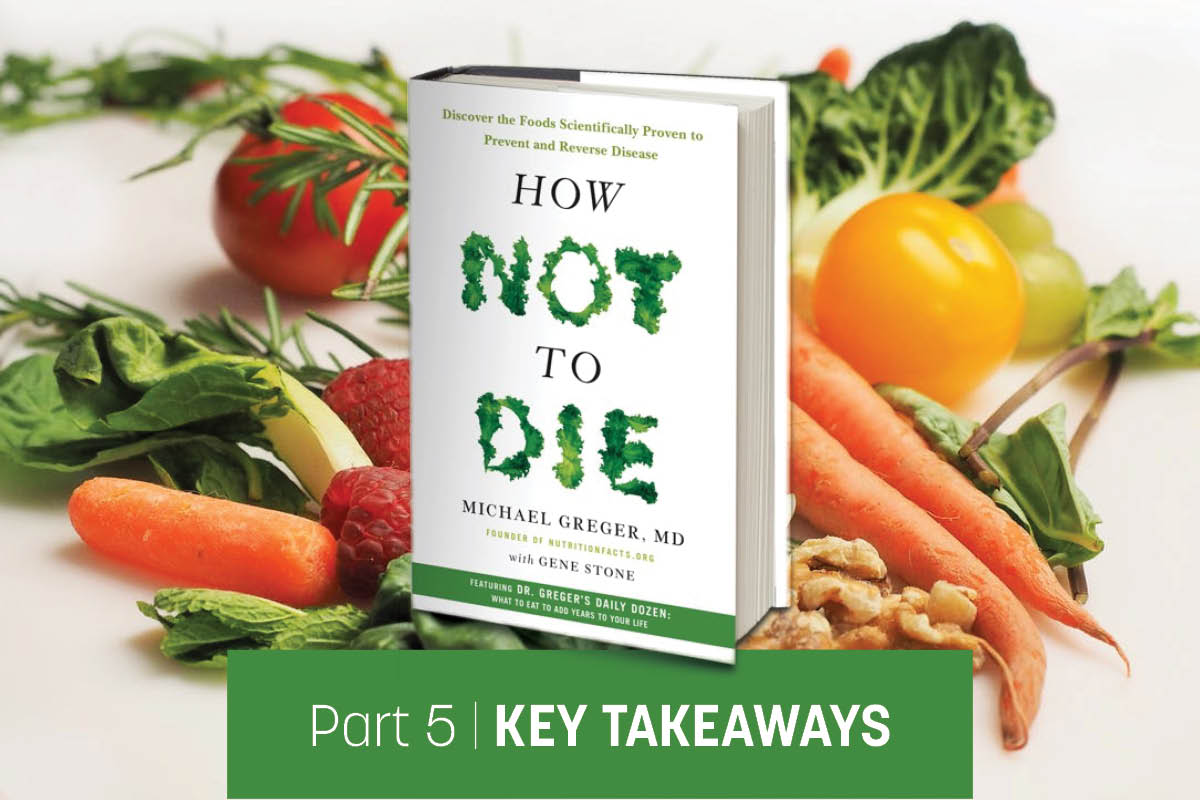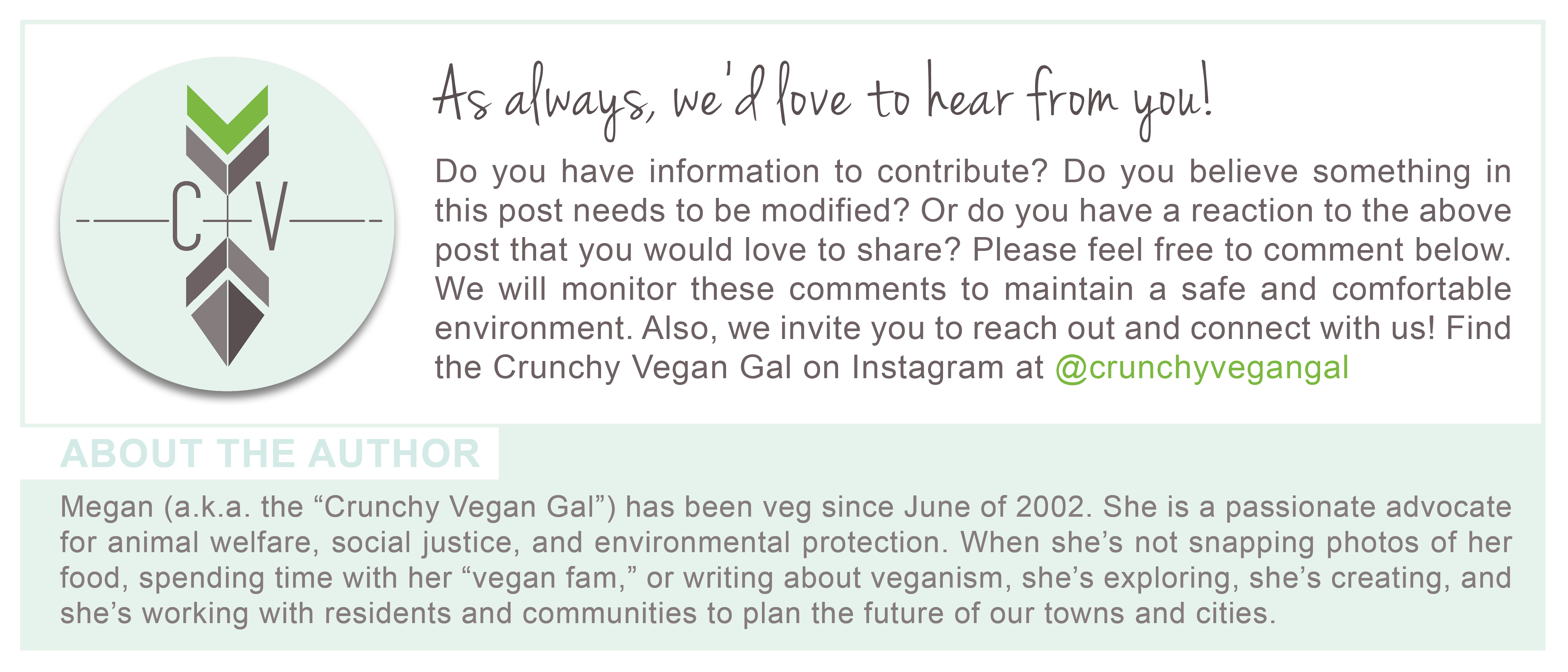This is Part 5 of a 5 part series summarizing the key points of the book How Not to Die and sharing my reactions as a proud junk food vegan and, thus, a suspicious reader from the start. Begin with Part 1 | Introduction >> Part 2 | Message >> Part 3 | Common Themes >> Part 4 | The Junk Food Perspective >> Part 5 | Final Takeaways
So, what sort of an impact did the book have on this self-proclaimed “junk food vegan”? I’d be lying if I said I wasn’t sucking on a sugary lollipop as I type this post. But I’d also be lying if I said I haven’t been incorporating significantly more exercise into my weeks or preparing fresh meals consisting of plant-based whole foods with greater frequency. I’ll always call myself a junk food vegan, I should think. Now, I’m just more interested in exploring the plant-based alternatives and taking a wholesome spin on my junky favorites. ‘Nana nice cream (ice cream made with bananas), fresh veggie and bean tacos, mashed purple potatoes (instead of white potatoes), and spicy kale chips all make it onto my healthy junk menu, alongside many other satiating and enjoyable foods and meals.
Takeaway
Dr. Greger’s composition is a very thorough collection of information, cited from a range of credible institutions. Almost every argument that could give reason to become plant-based was put forth in this book. Truly, there’s something everyone with every motivation (including appealing to vanity). If this book doesn’t convince readers to ditch meat, dairy, and processed foods in favor of whole, plant-based foods, I’m really unsure what will!
Plant-based diets can prevent, slow, and even reverse the development and progression of diseases and cancers. How Not to Die is empowering individuals to control and influence their own health. After all, a long and healthy life is your own choice.
The best things in life aren’t what kill us. The best things are what enrich us, and what we turn to so we don’t die prematurely: sweet and flavorful berries, crunchy cruciferous veggies, hearty handfuls of nuts…
We needn’t wait to be diagnosed with one of the 15 leading causes of death to start living healthy lives. We can start enjoying a delicious and satiating variety of foods right now that will not only heal us, but prevent us from getting sick in the first place!
As Dr. Greger compared, too often we eat as if the future doesn’t matter—we eat as though we’re consuming our last meal on death row. Instead, we should eat fruits and vegetables as if our life depended on it, because it just might!
Resources
After this book, I’m ready to make some healthier changes—to be less of a “junk food vegan” and more of a health-conscious vegan. I imagine omnivores, upon reading Dr. Greger’s book, will surely be interested in making the changes toward a plant-based diet.
If you’re wondering how you can get started, check out some of these resources:
- 21-Day Kick-Start Program
- Audio book supplemental PDF
- Kaiser Permanente’s Healthy Living Plant-Based Diet Booklet
- 3-step method for transitioning to a plant-based diet:
- Think of 3 meals you already enjoy that are plant-based
- Think of 3 meals you already eat that can be adapted to be plant-based
- Discover new healthy options
- 3-step method for transitioning to a plant-based diet:
- Compilation review of How Not to Die on Nutritionfacts.org
My Favorite PartI work long days, and outside of that, I volunteer for a handful of groups. This leaves little time for reading. But it affords me a lot of time for listening to books on Audible; which is what I did with this book. The Audible version, narrated by Dr. Greger himself, is actually more expensive than the printed copies—but I think it’s worth it. Here’s why. My favorite part of the book (by far) was Dr. Greger’s narration of the free radical experience as part of the mitochondrial theory of aging (Chapter 3)—Dr. Greger narrates an exhilarating action sequence where oxygen turns into an evil villain, of sorts, with no concern for the destruction it wreaks on your body. Lo and behold, anti-oxidant heroes step in and save the day. I would recommend the Audible version for this segment alone! But also, Dr. Greger has a silly sense of humor and an entertaining manner of speaking. (The Bearded Vegans have long debated if Dr. Greger sounds more like Seinfeld or Jeff Goldblum.) And really, I just found that listening to Dr. Greger narrate and emphasize key points helped to deliver his point. |
We hope you’ve enjoyed this mini-series! For more resources, head to NutritionFacts.org. Be sure to watch the PBS special on Tuesday, August 8 at 8pm ET.
This 5-part series includes:





I love How Not To Die! Dr Greger is brilliant.
Reading this book has been incredibly influential! I’m so glad I found it (and that it was available as a book-on-tape haha!).